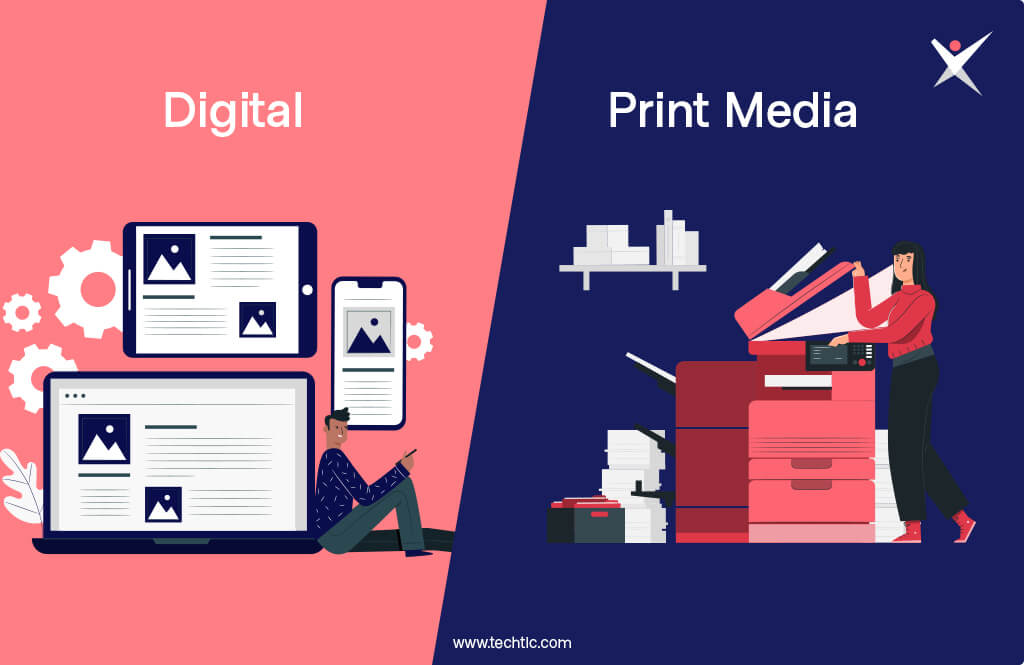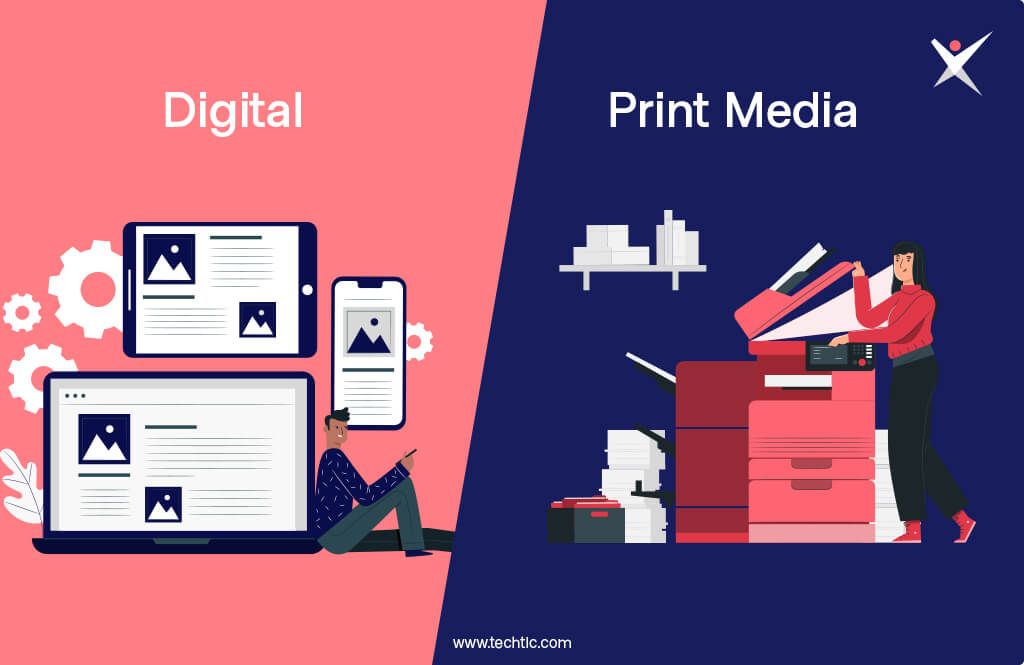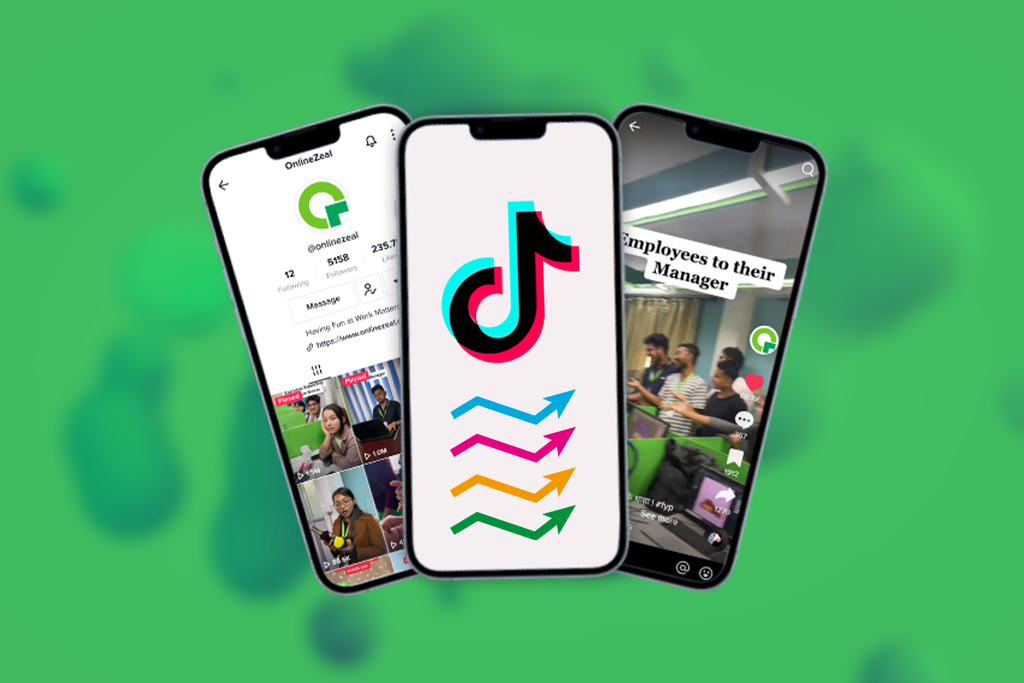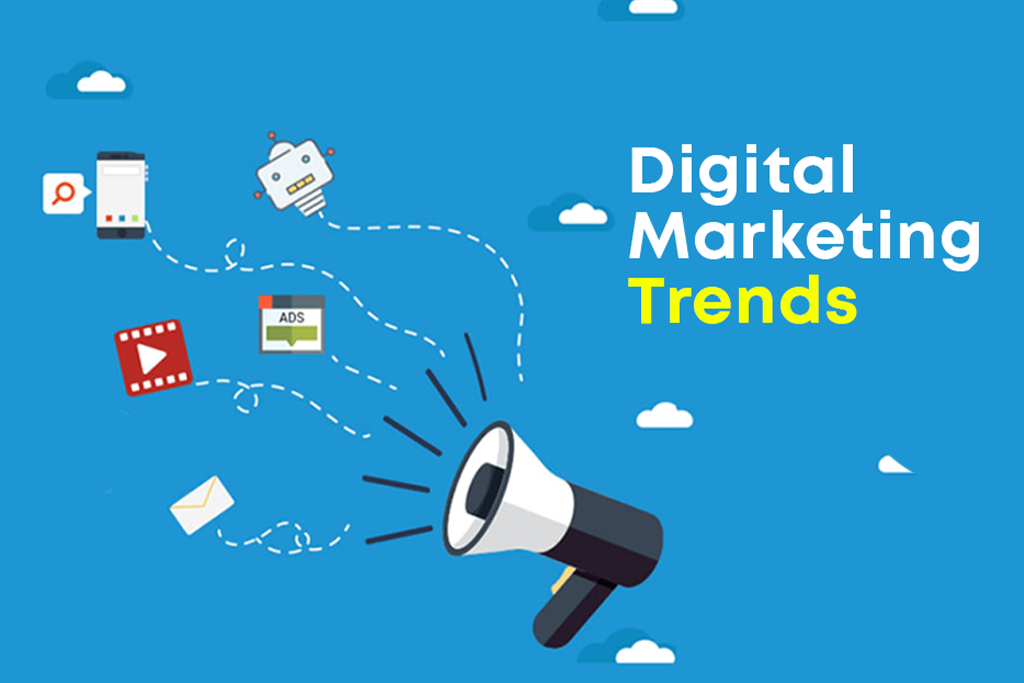Will Digital Media Replace Print Media?
Sailaj Pradhanang September 05, 2022
Print Media

History of Print Media:
One of the most important inventions in early modern times is the invention of Gutenberg Press. Invented in Germany in 1440 by Johannes Gutenberg, the printing press revolution altered the structure of society forever. By 1500, printing presses came into operation throughout Western Europe. These printing presses could produce up to 3600 pages per workday compared to forty by hand-copying. In the Renaissance, movable type printing introduced the era of mass communication throughout Europe.
Due to the relatively unrestricted circulation of information, revolutionary ideas transcended borders, captured the masses and threatened the political and religious authorities. The printing revolution led to the sharp increase in literacy, breaking the monopoly of the literate elite on education and learning, and bolstered the emerging middle class. Across Europe, the cultural self-awareness brought by printed media accelerated the development of European vernaculars and caused the downfall of sole dominance of Latin.
Current status of Print Media:
Print media may no longer be the first option for every business, but for some it is still a crucial part of their marketing strategy. Newspaper and Magazine Firms faced a decrease in circulation as well as advertisement revenue in recent years. Yet, print advertising will not disappear. Print media can provide what digital media can’t. It will always be more trusted compared to new technology, as digital technology does not provide consumers the physical experience that flipping through printed papers do.
Interestingly, QR codes has bridged offline and online media. The combination of print and digital will be very intriguing to observe as it unfolds. The widespread use of QR codes everywhere only indicate continued use of print media as digital media evolves.
Digital Media:

History of Digital Media:
The 1960s saw computing power and storage capacity increase exponentially. From then on there has been rapid advancement in computing and digitization.
Here is a detailed look at the development of digital media in each decade, beginning in the 1990s.
1990’s
- First use of the term ‘digital marketing’ | 1990
- Launch of the first search engine: Archie | 1990
- First Clickable web-ad banner | 1994
- Launch of Yahoo | 1995
- First e-commerce transaction over Netmarket |1994
- Launch of first social media site: SixDegrees.com | 1997
- Birth of Google | 1998
- Launch of Microsoft’s web search engine | 1998
The 90s was the decade individuals began their foray onto the internet, as the World Wide Web became publicly available in 1991. By 1995, there were around 16 million internet users worldwide. This was the era of online information. Netizens perceived the need for search engines, and Yahoo and Google found a footing.
Marketing Cloud software products were created as platforms that integrate customer data storage with analytics, brand boosting, community building and campaign tracking. These computing software products served as a central point for the future of marketing technology.
2000’s
- First mobile marketing campaign by Universal Music | 2001
- Launch of LinkedIn | 2003
- Launch of WordPress | 2003
- Google becomes publicly listed; Gmail is launched | 2004
- Launch of Facebook | 2004
- Launch of YouTube | 2005
- Launch of Twitter | 2006
- Launch of Hulu | 2008
- Launch of iPhone | 2007
- Launch of Google’s real-time search engine results | 2009
- Launch of WhatsApp | 2009
The 2000s saw a switch in customer behaviors. Through the prominence of search engines like Google and Yahoo, many customers began researching products online before making a purchase. This made a lot of marketers research the online buying behavior of consumers.
The 2000s also saw a boom in social media platforms, creating a new platform for marketing. It was also the decade where smartphones were popularized, giving consumers easier access to the internet, their social platforms and thus social media marketing in Nepal.
2010’s
- Launch of Instagram | 2010
- Web-use overtakes percentage of TV viewership among youth demographic | 2011
- Launch of Snapchat | 2011
- 64% of advertisers expect to increase social media budget | 2013
- Amazon dominates e-commerce | 2013
- Launch of Facebook messenger app | 2014
- LinkedIn features tailored ads | 2014
- Mobile usage surpasses desktop browser traffic | 2014
- Rise of content marketing | 2015
One of the biggest changes in this decade was society’s dependence on mobile phones. Individuals spent hours on mobile phones, whether it was for communicating with friends, taking photos, paying bills or checking emails. With the rise of apps for every aspect of life, an increasing amount of time is now spent on smartphones.
This in turn made marketers put a heavier focus on marketing online. These days, you can’t scroll social media without coming across an ad or promoted post. Facebook introduced mobile ads in 2012 and seven years later it accounts for 91% of their total advertising revenue.
Business also needed to ensure their websites were compatible with smartphones. Consumers would buy from businesses less often if the website wasn’t mobile-friendly – even if it’s from a brand they like.
WhatsApp, Facebook Messenger and WeChat — all of which didn’t even exist in the previous decade, were launched in the 2010s. These mobile platforms allowed business to have one-on-one interaction with customers.
Quick, punchy, and humorous posts drew the most number of engagements on the social media. This made marketers rethink their approach to content, focusing more on developing strategies for their online content posting. Most people now cannot continue their daily lifestyle without the online sphere.
Current Status Of Digital Media:
Digital Media has initiated the new revolution in the information age. Examples of Digital media include digital images, videos, web pages, websites and electronic books. These have made tremendous impact in the realm of publishing, journalism, public relation, entertainment, and education. Marketing through digital means is usually less expensive than through printed media. The reduced costs required to create and share content has led to mushrooming of individual content creators. New types of content like blogs, memes and video essays are also the product of the Digital Age.
The impact of digital media on the masses have led to numerous political and social uprisings and movements in countries all around the globe. Regulating and censoring the digital media is a tremendous challenge to governments. Laws and regulations are still trailing behind the ever evolving forms of digital media. New issues about intellectual property rights such as copyrights and trademarks have come up.
Comparing Digital Marketing with Print Marketing:

There are pros and cons of both Digital and Print media. In terms of targeting a particular audience of a certain age group, profession, gender, and location, digital media is highly effective. Also, auditory content and videos can be consumed by illiterate people as well.
However, giving a printed business card to a potential customer is more convenient and looks more professional than asking the same customer to like your Social Media Page. Also, it is more time-consuming for someone to visit the website than handing out a brochure of your business to the person.
As research shows both printed advertisements and social media ads have an equal amount of audience, each business should decide which media is best for them—Digital, Print, or a combination of both? Your ideas, products, and services deserve to be presented before the world. The right amount of mixture of print and digital media will give your business the exposure it needs.
Can you guess which media will be boom in Digital Marketing agency in Nepal?
Read trendy topics of OZ
- Sales and Marketing Tips
- The trend of Digital Marketing in Nepal
- Best Digital Marketing Agency in Nepal
- Advantages of Meme Marketing







